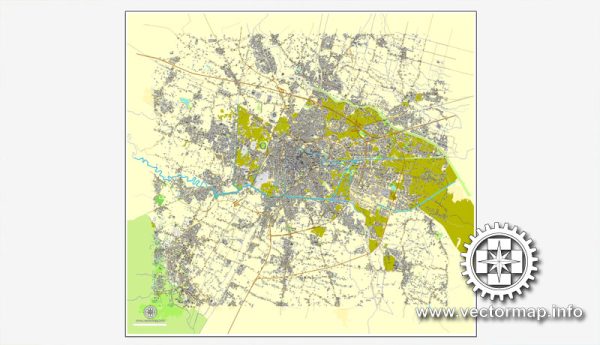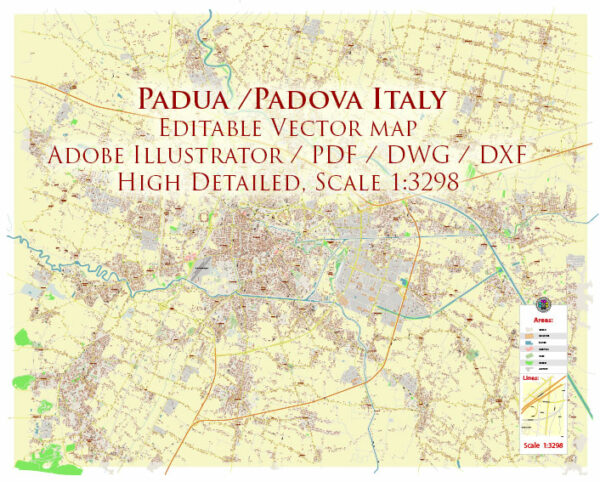Padua, located in the Veneto region of northern Italy, has a rich history of urban development dating back over two thousand years. Here is a brief overview of the key historical phases in the urban development of Padua:
- Roman Era (3rd century BC – 5th century AD): Padua’s history can be traced back to the Roman era when it was known as Patavium. It became a Roman municipium in the 1st century BC, and many architectural elements from this period are still visible. The city prospered as a center of trade, commerce, and education.
- Medieval Period (6th century – 14th century): With the fall of the Roman Empire, Padua faced various invasions, including those by the Lombards and the Carolingians. In the 12th century, it became a free commune, gaining a degree of autonomy. The medieval period saw the construction of important religious and civic buildings, such as the Cathedral of Padua (Duomo) and the Basilica of Saint Anthony.
- Renaissance (15th – 16th century): The Renaissance brought about significant changes to Padua, with an emphasis on classical architecture and intellectual pursuits. The University of Padua, established in 1222, played a crucial role in the city’s cultural and academic development during this period. The renowned anatomist Andreas Vesalius taught at the university.
- Venetian Rule (15th – 18th century): Padua came under the rule of the Venetian Republic in the late 15th century. Venetian influence is evident in the architecture of many buildings, including the Palazzo della Ragione and the Prato della Valle, a large square with a canal and an island.
- Napoleonic and Austrian Period (late 18th – 19th century): In the late 18th century, Padua experienced changes under Napoleonic rule and later came under Austrian control. The city became part of the Kingdom of Lombardy-Venetia. During this time, there were urban planning initiatives and infrastructure development.
- Italian Unification (19th century): Padua, along with the Veneto region, became part of the Kingdom of Italy in 1866 after the Third Italian War of Independence. The city saw industrialization and modernization, impacting its urban fabric.
- 20th Century to Present: Padua continued to grow and develop in the 20th century, with expansions in infrastructure, education, and industry. The city has strived to preserve its historical character while adapting to the needs of a modern urban environment.
Throughout its history, Padua’s urban development has been shaped by a blend of Roman, medieval, Renaissance, and later influences, making it a city with a diverse and fascinating architectural heritage. The preservation of historical landmarks alongside contemporary development reflects the city’s commitment to balancing tradition and progress.



 Author: Kirill Shrayber, Ph.D.
Author: Kirill Shrayber, Ph.D.